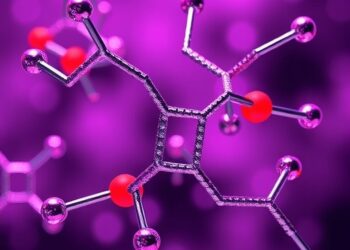The Universitat Jaume I in Castelló and the Universidade Federal de São Carlos in Brazil have developed a process to obtain a semiconducting metal-carbon compound with excellent antimicrobial properties, stability and low cytotoxicity, facilitating its use as an antimicrobial additive or coating in sectors such as automotive, construction or equipment, sensors or catalysts, among others.
The Universitat Jaume I in Castelló and the Universidade Federal de São Carlos in Brazil have developed a process to obtain a semiconducting metal-carbon compound with excellent antimicrobial properties, stability and low cytotoxicity, facilitating its use as an antimicrobial additive or coating in sectors such as automotive, construction or equipment, sensors or catalysts, among others.
The search for effective antimicrobial solutions to combat the contamination of materials by various microorganisms poses a number of challenges, such as increasing resistance to traditional antimicrobials, the rapid spread of infectious agents and the constant adaptation of microorganisms. In this context, innovations in antimicrobial materials are becoming increasingly important as they contribute to effective strategies for the prevention and control of emerging infectious diseases.
The new composite material has outstanding advantages over other materials already in use, such as excellent stability, low cytotoxicity (damage to other materials), antimicrobial effect without the need for activation, and versatile application as an antimicrobial agent and additive on different surfaces and polymeric bases. “A more effective process than organic has been developed to oxidise (burn) fungi and bacteria, actually producing two highly antioxidant compounds that destroy bacteria”, the researchers explain.
The process used to produce the composite material, which has been validated on an experimental scale in the laboratory, is carried out under mild synthesis conditions (low temperature and short times) and does not produce any secondary synthetic residues. The two universities aim to develop and adapt it to specific applications through specific agreements and subsequent licensing agreements with the business sector.
The project was developed by the researcher Marcelo de Assis from the Universitat Jaume I in Castelló and Lara Kelly Ribeiro, Bruna Fragelli de Lima, Joice Margarete Almeida, Rodolpho Igor Mesquita, Mariana Ottaiano Gonçalves, Cristina Paiva de Sousa and Fernanda Freitas from the Universidade Federal de São Carlos in Brazil.
For thirty years, the collaboration between the Laboratory of Theoretical and Computational Chemistry of the UJI, directed by Professor Juan Andrés Bort, and the Centre for the Development of Functional Materials of the UFSCar, directed by Professor Elson Longo, has made it possible to obtain new materials and technologies, combining theoretical and experimental methods in which the properties of materials are controlled according to the density of defects, resulting in better performance and functionality. The researchers of these two scientific structures have published more than a hundred articles on semiconductors in the most prestigious journals of chemistry, physics, materials science and nanotechnology.
The research projects that have led to the presentation of this new compound have been funded by Spanish and Brazilian bodies: Ministry of Science and Innovation (PID2022-141089NB-I00); Generalitat Valenciana, through the Department of Innovation, Universities, Science and Digital Society (CIAICO/2021/122); the Ministry of Universities, through the Margarita Salas Postdoctoral Contract (UP2021-02), the Fundação de Amparo à Pesquisa do Estado de São Paulo (FAPESP) and the Conselho Nacional de Desenvolvimento Científico e Tecnológico (CNPq).
The Universitat Jaume I, through the Office for Cooperation and Technological Development and the Vice-Rector’s Office for Scientific Transfer, Innovation and Dissemination, facilitates the scientific and technological transfer of its research staff, with the aim of promoting its vocation for the transmission and dissemination of scientific, technical, social and humanistic knowledge.
The CDMF is one of the Centres for Research, Innovation and Dissemination (CIDD) supported by the São Paulo State Research Foundation (FAPESP) and also receives investments from the National Council for Scientific and Technological Development (CNPq) and the National Institute of Science and Technology of Materials in Nanotechnology (INCTMN).
Method of Research
Experimental study
Subject of Research
Not applicable




